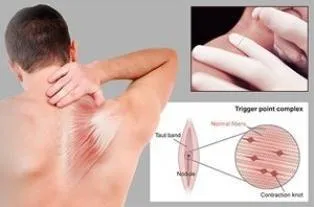Dry needling is a physical therapy treatment that uses fine, sterile needles to target trigger points in muscles. This technique can be administered by either a physical therapist, chiropractor or medical doctor who has undergone training in dry needling.
Trigger points are knotted areas of muscle tissue that irritate nerves and cause pain. Dry needling can effectively treat these myofascial trigger points by relieving tension on the affected areas.
What is Dry Needling?
Dry needling is a therapy that employs needles to target muscle pain and promote movement. Physical therapists utilize it for treating various musculoskeletal conditions, such as chronic myofascial pain (including myofascial pain syndrome and fibromyalgia) and trigger points.
Trigger points are tight bands or knots in your muscles that can cause pain, restrict motion and disrupt normal activity. They may also refer pain to other parts of the body – known as referred pain.
Many patients have discovered that dry needling can provide them with much-needed relief from muscle injuries or chronic pain. It also works well in combination with other forms of physical therapy, like stretching or massage.
Dry needling is a non-invasive treatment that involves inserting sterile, thin filament needles into a trigger point on your muscle. Once inserted, the needle causes a localized twitch response that helps relax the muscle and restore normal function.
How Does Dry Needling Work?
Dry needling is an increasingly popular alternative treatment among physical therapists and their patients. Although much remains unknown about its mechanisms of action, some claim that dry needling provides them with relief from pain and improved mobility.
Dry needling is a technique similar to acupuncture that uses thin needles on your body in order to relax tense muscles and stimulate the production of natural painkillers. These needles penetrate deep into both your skin and upper levels of muscles for results.
Therapeutic dry needling is commonly used to relieve muscle tightness, reduce tendonitis and inflammation, as well as promote healing from other muscular issues like rotator cuff damage.
Dry needling can also relieve nerve compression caused by tight muscles, which is especially beneficial for people suffering from low back pain.
Can Dry Needling Help My Low Back Pain?
Dry needling is one of the more successful therapies for loosening knotted muscles that have become trigger points. Trigger points not only cause pain elsewhere on your body but they send pain signals directly to your brain, making your nerves even more sensitive and amplifying existing discomfort.
Your physical therapist can identify a trigger point through your medical history and physical exam. They then insert a thin needle through your skin directly into the trigger point for relief.
They may adjust the needle slightly in order to provoke a local twitch response–a brief and abrupt spasm of muscle.
A muscle twitch reaction is an indication that your muscle is responding to treatment. Some people experience relief immediately after a session, while others might need multiple sessions in order to see results.
Though clinical trials have yet to evaluate its effectiveness for low back pain, anecdotal evidence suggests it can help relieve symptoms and reduce discomfort. Patients with a history of active myofascial trigger points (MTrPs) may benefit most from this type of treatment.
How Long Will Dry Needling Take?
Dry needling is an alternative medicine technique used to address muscular knots, or trigger points. These knots may cause pain, stiffness, and even referred pain.
Needling a painful muscle or trigger point stimulates the brain, initiating an array of events that promote healing and regeneration of damaged tissue. In some cases, patients report immediate relaxation after treatment; however, it usually takes multiple sessions before noticeable improvements can be observed.
Our chiropractors use dry needling for low back pain in combination with an individualized stretching and corrective exercise rehab program to help alleviate your discomfort and get you on the road to recovery. These treatments often produce rapid improvements in range of motion, reduce pain, stimulate nerve recovery and muscle activation needed for strength and stability gains.
Dry needling has been used for hundreds of years as a safe and effective treatment for conditions like sciatica, numbness and tingling, muscle tightness or neuropathy in the feet. It has become widely accepted as an effective cure by healthcare practitioners around the world.
If you’re interested in learning more about dry needling and other physical therapy treatments, visit our home page or contact us to schedule an appointment with our team of specialists.



